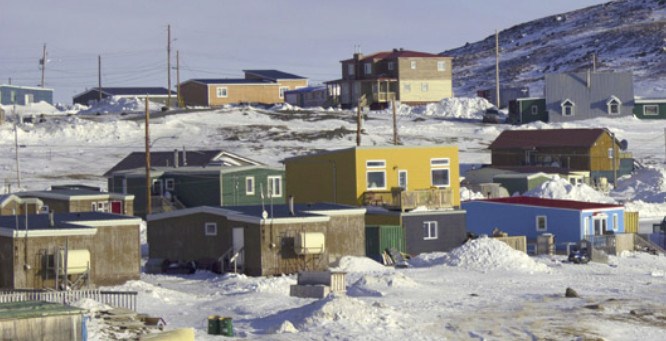A new report is recommending 3D-printed homes be tested in remote Northern Canada to study their suitability in addressing housing problems in Northern and Indigenous communities.
Revolutionary Building for the North: 3D Printing Construction, commissioned by the Conference Board of Canada, is the first report in the “Cool Ideas” series designed to study how emerging technologies could “improve or disrupt the quality of life in Canada’s North.”
According to the report, the cost to construct a standard, 1,200-square-foot, wood-frame home in a fly-in Northern Ontario community is close to $350,000. But the materials are often “poorly suited” to the harsh climate, and builders are at the mercy of the short transportation season, since materials have to be trucked in via ice road or flown in by sealifts.
The report suggests that 3D-printed homes could be built faster, at lower cost, while still addressing chronic issues such as overcrowding and the deterioration of existing homes.
“While it’s not yet clear whether the technology can address or overcome some of the key issues that construction projects must contend with in Northern and remote environments, it’s not hard to see how 3D printing construction could potentially have a meaningful impact in Canada’s North,” said Stefan Fournier, the Conference Board’s associate director of Northern and Aboriginal policy, in a Nov. 29 news release.
“Housing and construction in general is one of the greatest challenges in Northern Canada. There is a severe shortage of suitable housing and appropriate buildings across the North, and the high cost of standard construction and short transportation season have prevented governments from coming close to meeting the urgent need for housing in the North.”
However, 3D-printed homes are untested in the North. It’s unknown how the materials typically used in 3D printing – extruded concrete and foam – will stand up in the harsh climates, or whether the concrete may be too heavy for houses that are built on permafrost terrain, the report notes.
There is also concern about how the new technology would impact employment in the current construction industry – if the technology is proved viable and replaces traditional construction methods, thousands of Northerners could be put out of work.
The report calls for theoretical research and pilot projects to determine how 3D printing performs in the North, and suggests the establishment of a Northern consortium to launch and manage research related to 3D printing.
Members should include Indigenous economic development organizations, local governments, territorial or regional governments, 3D printing companies, and academic research centres, the report says.
“There are still many unanswered questions about 3D printed homes,” said the report’s co-author, Ken Coates, in the release.
“But, there are signs that 3D printing could revolutionize home construction and potentially help to address many of the housing challenges facing the region.”




